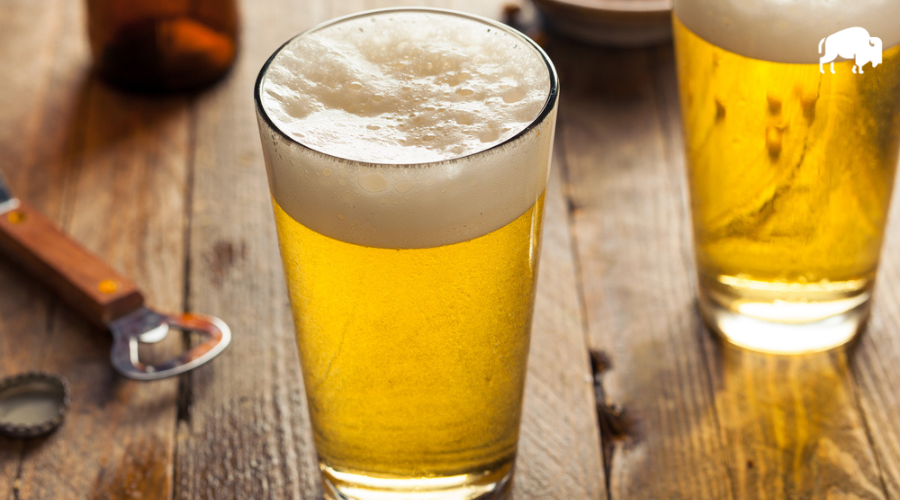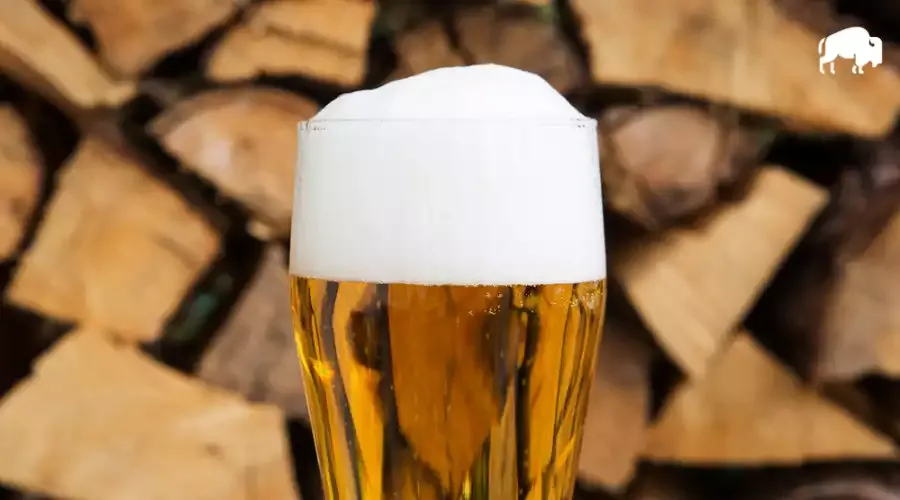Czech Pilsner has become the catchall name for a much broader and more diverse group of beers from Czechia. Let’s dig into what this style really is and how to brew it!
To brew a fantastic Czech Pilsner, start with water that has a low overall mineral content. Use an excellent under-modified pilsner malt, preferably one that’s continental. Add a dash of dextrin malt or even some caramalt . For hops we’ll use, Czech Saaz. Finally, add a Czech or Munich Lager yeast and away it goes.

What is a Czech Pilsner?
Glad you asked! According to the BJCP and Ron Patinson, Czech Pilsner is one of a family of beers. It belongs to a broader category known as Czech lager. The premier example, and maybe the only “real” Czech Pilsner, is Pilsner Urquell.
When most beer nerds in the USA talk about Czech Pilsner, they are talking about Czech lager. Since 2015, the BJCP has done a nice job of breaking the category of Czech lager into several separate styles. They are:
- Czech Pale Lager
- Czech Premium Pale Lager
- Czech Amber Lager
- Czech Dark Lager
We’ll focus on Czech Premium Pale Lager as it most closely resembles what is commonly referred to as Czech Pilsner.
Czech Premium Pale Lager typically, has an ABV of 4.2 – 5.8%. It is medium-rich in malt flavor and the IBUs are in the 30 – 45 range.
The flavor is complex while remaining very drinkable. Due to the water profile, it has a nice rounded hoppiness. Neither hops nor malt dominate but both are present and noticeable.
Some fruity flavors and diacetyl (think buttered popcorn) can be found but are usually below sensory threshold. If present, you shouldn’t really notice them.
In the glass, it should be golden to intensely golden in color. Overall it should be clean but not as crisp or cutting as its German counterpart.
On the production side, most Czech Pilsners are or at least used to be open fermented, unfiltered and unpasteurized.
What Makes a Good Czech Pilsner?
A good Czech Pils is moderate in ABV. It’s something you can drink multiples of and still be able to hold a coherent conversation. It’s not watery. It’s full and refreshing…malty and hoppy. The malt character is medium to rich-ish depending mostly on the starting gravity.
It’s hoppy. But not hoppy like an IPA. It’s not fruity and new-fangled tropical hops are out of place in a Czech lager. There are plenty of fruity lagers out there now and they’re not a reflection of a Czech style.
Czech Lagers shine with Saaz character. This hop character gets nicely rounded out from the soft water profile. It’s bitter but more in a soft way and it isn’t biting or lingering. Saaz hops impart a beautiful spicey, herbal, and floral quality.
Carbonation should be kept in the low to medium range. In Czechia, these beers are poured in such a way that the head is thick and imparts a “creamy” experience to the drinker.
How to Brew Czech Pilsner
Water
We’re starting with water because it’s really important. You need a low overall mineral content. You need to know your source.
If you have hard water with tons of minerals, cut it appropriately with distilled or reverse osmosis (RO) water. “Appropriately”, means using probably 50-75% distilled or RO. But I can’t actually tell you how much because it depends on your water source. Get your water tested, use a water calculator, and stop guessing.
If water chemistry intimidates you (like it does me), check out our water chemistry guide here.
Once you know your water, use a soft water profile and maybe bump up the chloride a bit. A bump in chloride levels is especially beneficial for low ABV versions of Czech lager.
Grain Bill and Mash
I’ve never been a pro-decoction guy. It’s too much work. Modern malt has enough diastatic power to convert concrete into simple sugar and is highly modified.
But…we’re brewing a Czech lager so I’d advise against using the modern-pseudo-6-row varieties of barley and go with something heirloom and under-modified.
Try using Weyermann Floor-Malted Bohemian Pilsner Malt. Don’t be fooled into using a cheap generic malt in this beer. Malt matters. If you want to stray from a European source, I’d try the Gateway malt from Mecca Grade.
Double and triple decoctions are traditional when brewing a Czech lager. See our article on Decoction Mashing for Homebrewers for a nice look at the why and how behind decoction.
One reason not to do a multi-step decoction or step mash is if you’re trying to brew a light version of a Czech Lager. For example, something with a starting gravity of 1.040. You’ll end up with something too dry and thin.
Assuming you’re using an under-modified pilsner malt. Do a double or triple decoction.
If you’re totally set on not doing a decoction. Use a multiple step-mash schedule like this:
- 122 F for 15 minutes
- 145 F for 30 minutes
- 158-160 F for 30 minutes
- Mash out at 170 F for 10 minutes
Boil and Hops
Boiling for 60 minutes is adequate. If you’re worried about Dimethyl sulfide (DMS), boil for 90 minutes.
For hops, use Czech Saaz. Do it.
As for timing and amounts, four additions of about an ounce at each addition will work perfectly. That’s one ounce at 60, 30, 10, and 0 minutes. You’ll want to back off the amount of hops a bit for an ABV below 5%.
Yeast
If brewing a Czech Pilsner with a lower ABV (4-ish), use the Augustiner yeast strain. It’s a reliable strain that ferments clean and will leave enough unfermented sugar (body) behind for a “session” beer. One drawback is that the Augustiner strain is a bit slow. Be patient and it will faithfully chew through and leave you with a great beer.
For dry yeast, go with the old workhorse W-34/70. This is the Weihenstephan strain and it kicks ass. It’s pretty great at fermenting “clean” at warmer-than-normal lager temps too, if that’s your thing.
If you’re going all classic, give the Urquell strain a shot. You can find it from Imperial Organic Yeast, Wyeast, or Whitelabs.
The Urquell brewery is known to talk about how their yeast isn’t super attuative. Meaning it won’t eat all the fermentable sugar and leave the beer bone dry. When selecting a yeast strain, keep in mind that you don’t want it to ferment everything.
Fermentation Schedules
Far be it from me to tell you to ferment your lagers warmer than tradition dictates…but I’ll tell you how.
Here’s an example of a warmer-than-usual lager fermentation schedule. This is what Chris Lohring of Notch brewing has used. This info is from the BeerSmith Podcast episode #113.
Start by chiling to 52-54 F, pitch the yeast, then let it naturally warm up to 56 F. Hold it at 56 F until you’ve reached the last ⅓ of fermentation. At this point raise the temperature to 60 F and hold it there until you reach a stable final gravity. That last step is what is known as a “diacetyl rest”.
That method will give you a quicker turnaround than just fermenting at 50 F (10 C). 52-54 F is cool enough at the start to hold those fruity esters in check.
Nobody should shake their head if you decide to ferment your beers a little warmer or colder than the example above. Just be aware that you risk more fruity ester production at warmer temps and fermentation will take longer if cooler.
Because Czech Lager shouldn’t contain a ton of fruity esters, I’d recommend sticking with a traditional fermentation schedule or the one above.
How to do a “D” Test
It would be a shame to get all the way through fermentation, bottle or keg the beer, only to find out you’ve got a buttery beer. Don’t be stuck with diacetyl. Do a “D” Test.
Because there can be precursors to diacetyl in your beer it’s important to take this step to ensure there aren’t any. You won’t be able to smell it by sniffing around your fermentor because it has formed yet but the precursor may still be present.
Take a small 100 ml sample from your fermentor. Warm it up to 140 F and hold it there for 10 to 15 minutes. Compare this warmed sample’s aroma to another sample from the fermentor. If the yeast isn’t done cleaning up you’ll notice that classic buttered popcorn aroma.
It’s worth noting that some people are “blind” to diacetyl at low levels. If your friends say it smells buttery and you can’t pick up on it…trust them.
As a quick aside, Pilsner Urquell is known to target a certain level of diacetyl in their packaged beer. It’s below sensory threshold but it may be adding a certain boost in the overall body, mouthfeel, and flavor of the beer.
Final Thoughts
Czech Pilsner is often viewed by the American beer nerd through a narrow lense. There is now an awakening (in the US) to the broader range of Czech lager. Hopefully, more brewers and consumers continue to discover the variety within beers from Czechia.
If you like easy drinking yet complex, brew up a batch of Czech Pilsner.
Introduction To Lagering Video Course
If you want to learn how to make great lagers, check out this Craft Beer & Brewing video course:
In Craft Beer & Brewing's Introduction to Lagering course, you'll learn to create crisp, cold-conditioned lagers at home. With solid technical advice and temperature control tips, you'll have all the tools you need to brew lagers right.
It’s free for the first 30 days giving you access to over 60 homebrewing courses from the best brewers in the business.
Frequently Asked Questions
What’s a Substitution for Saaz Hops?
I’m not a huge fan of Hop substitutions but I get it. You’ve got some in your freezer so why not use them. For a hop grown in the US, Sterling is your best bet. Other possible options include: Tettnang, US Saaz, Polish Lublin, Sladek, Ultra and Vanguard.
Why Bother Checking for Diacetyl?
If you’re a homebrewer, you don’t have to check for it. It’s advisable to perform a “D” test at least once if only for the sake of experience. As long as you’re not picking up buttered popcorn notes in your final product, you can get away with skipping it.


